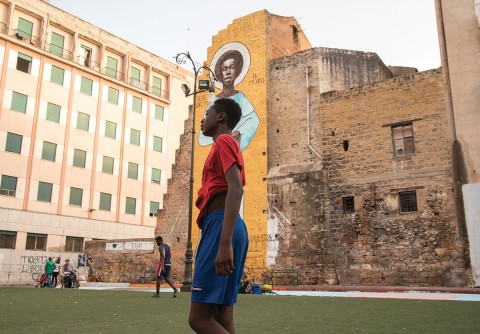In Mediterranean Europe, St. Benedict the Moor is back
The Afropean saint is reemerging amid a swelling African diaspora.

Benedict Manasseri was born in Sicily in 1526, the son of African enslaved parents. After earning a reputation for his deep sanctity and healing powers, he joined the Franciscan order in 1562. Popular veneration grew following his death in 1589, when he was remembered as St. Benedict the Moor, a beloved figure in the era of the Counter-Reformation. He was canonized in 1807, the first Black saint in modern times. Repeatedly throughout history, that racial element has attracted and sometimes disturbed believers. But in contemporary Europe, Benedict is acquiring a whole new relevance.
Benedict has had special appeal for Black followers. Several historically Black Catholic parishes in US cities bear his name, and he is popular in Brazil. Sicily itself, however, has always evidenced some ambiguity about his background. After more than a century as the unofficial patron saint of Palermo, and sometimes of the whole island, he was gradually displaced. Images of him evolved to shift the focus from the saint himself to the very White figure of the infant Jesus that he carries.
Such moves stirred up little controversy at a time when Black faces were rarely encountered in Sicily. But that situation has changed rapidly in modern times, with the growth of immigration from the North African Maghreb and sub-Saharan Africa. Over the past decade, the Mediterranean has been the setting for a migrant crisis on an alarming scale, as thousands of would-be newcomers have perished attempting to cross the sea. Today, 2 percent of Italians are of recent African origin, and the number is growing steadily.





